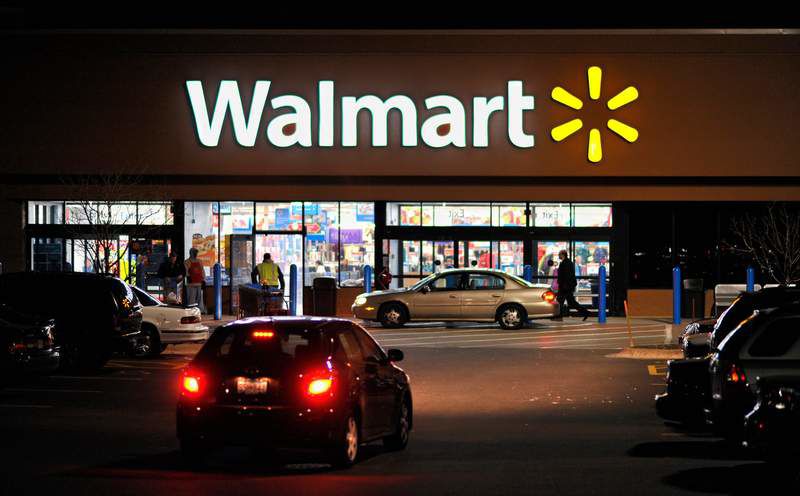Wal-Mart on building blitz on Target turf
Published 5:00 am Sunday, March 13, 2011

- Customers shop at the newly remodeled Walmart in Eagan, Minn., in December 2009. Minnesota, where Target has 74 stores, the bulk of them in the metro area, has always been one of the most profitable regions for the Minneapolis-based retailer. But Wal-Mart envisions a market opportunity.
MINNEAPOLIS — Nataliya Gourley is a Target shopper — for now.
Just down the road from the Blaine SuperTarget where the 37-year-old piano teacher shops, Wal-Mart Stores Inc. is planning a new store. Will Gourley defect when this Walmart opens?
“Why not?” she asked. “It’s cheaper. Actually, I was waiting for it.”
She won’t need to wait much longer. Wal-Mart Stores Inc., the country’s top mass merchandiser, is on a building blitz that, by one estimate, will pour $1 billion into Minnesota to build 50 or more stores over the next five to eight years. Already, it’s pursuing at least six new stores in the Minneapolis area with many more on the way, say people familiar with the company’s plans.
The move, which comes after several years of remodeling and expanding the 20 stores it already has in the metro area, is a bold strike at a major rival, Target Corp. Minnesota, where Target has 74 stores, has always been one of the most profitable regions for the Minneapolis-based retailer.
“Wal-Mart wants to beat Target on its own turf,” said Burt Flickinger III, managing director of Strategic Resource Group, a retail consultant in New York City that closely follows the Bentonville, Ark., retailing giant. His $1 billion Minnesota expansion estimate includes two new distribution centers.
“It almost seems personal to me,” said retail veteran Dick Grones, principal at Cambridge Commercial Realty in Minneapolis.
The throng of new stores includes scaled down mini-supercenters of up to 99,000 square feet and at least two dozen additional small, urban format stores of up to 55,000 square feet, according to Flickinger.
About half of that expansion will be in the Twin Cities — “a construction phase of unprecedented proportions in terms of expansion into a market that’s already overstored,” he said.
Wal-Mart has been stepping up construction around the country as it tries to gain traction off the Great Recession. Though it initially fared well as the economy sank and shoppers turned to its low prices, the retail giant has suffered six straight quarters of declining U.S. same-store sales.
The recession had the opposite impact on Target. It was initially hurt, but has had positive same-store sales for the past four quarters.
Analysts say Wal-Mart hurt itself when it decided a few years back to radically reduce the number of products on its shelves, and to shift focus away from the rock-bottom prices that its core customers — households with incomes below $70,000 — want.
Wal-Mart refuses to discuss numbers, as did Wal-Mart’s local broker, Mike Sims, head of the local office of Mid-America Real Estate Group.
Lisa Nelson, Wal-Mart’s local spokeswoman, emphatically denied that Wal-Mart’s expansion has anything to do with Target. It’s simply about serving its customers, she said. She described Flickinger’s $1 billion assessment as “speculative” and “not based on anything that is going on in our operation here in Minnesota.”
“There’s not 60 projects in the pipeline,” she said.
But there is ample room to expand, she said.
“If you look at a map of our footprint, you would see there are customers that are not served out there,” Nelson said. “We have customers in Minneapolis that want access.”
A super punch
A push in Minnesota also gives Wal-Mart a second punch against another top rival — Minnesota-based Supervalu, the country’s second-largest grocery store chain and operator of Cub Foods, the dominant Twin Cities grocery chain.
Some retail experts chalk up the aggressive expansion to the simple fact that it’s Wal-Mart and likes to be first.
Just where Wal-Mart ranks in grocery sales market share isn’t clear. Wal-Mart places somewhere around No. 3 or No. 4 in the metro area, behind both Target and Cub Foods, according to 2010 data from IRI InfoScan published by Trade Dimensions, a service of the Nielsen Co.
More recent numbers from Strategic Resources Group, which combines Wal-Mart with its Sam’s Clubs wholesale clubs, puts Wal-Mart at No. 2, with 26.3 percent market share in the metro area, just behind Supervalu at 26.9 percent. By this count, Target has 16.2 percent market share.
Counting stores is easier. Wal-Mart has about 20 stores in the metro area now, at least 16 with full grocery departments. That’s less than half of Target, which has 53 stores, 23 of them with groceries. It’s also fewer than Supervalu Inc., which has 39 Cub Foods stores (excluding franchises) and Roundy’s Supermarkets Inc., which has 32 Rainbow Food Stores, according to Nielsen.
Retail analysts agree Wal-Mart’s expansion will steal market share from nearly everyone, but will hit discount supermarkets and grocers the hardest. Flickinger predicts something of a blood bath. Brennan said he doesn’t expect any grocery chains to fold, but said individual stores may close.
Executives at Target and Cub Foods wouldn’t discuss Wal-Mart’s local expansion. In interviews, they insisted they will thrive because they have differentiated themselves.
Keith Wyche, president of Cub, said it will keep shoppers in part because its stores carry a lot more items, including local favorites such Old Dutch, Land O’ Lakes and Old Home.
Cub also tops Wal-Mart in its focus on fresh offerings in its produce, meat, bakery and deli departments, he said.
“We’ve kind of been the best-kept secret in those things,” Wyche said.
Kathee Tesija, Target’s executive vice president of merchandising, said she isn’t worried about customers defecting because Target is religious about connecting with its customers and delivers clean, well-organized stores.
“I think the store experience is really a superior one,” Tesija said.
Several of the new Walmart stores appear to be the 150,000-square-foot supercenter variety with grocery departments.
Flickenger called the expansion a direct assault on Target’s successful SuperTarget format. SuperTargets, he said, will be Wal-Mart’s “worst nightmare for the next five to 10 years.”








